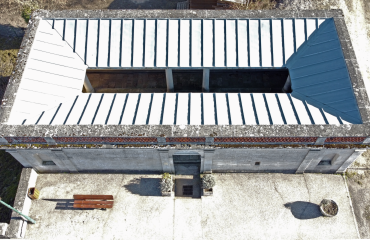En quelques mots
Le lavoir de Marey-sur-Tille du XIXe siècle est l’œuvre de l’architecte dijonnais Sirodot reconnu à cette époque. Il est décoré de pilastres et d’un attique masquant la couverture en zinc. Peu courant en Côte-d’Or, il est de type «compluvium». Cela signifie qu'il possède un toit ouvert en son centre, ce qui permet de récupérer l'eau de pluie dans un bassin placé en dessous de l'ouverture. On appelle ce bassin un "impluvium". C'est un principe tiré de l'architecture des villas antiques grecques puis romaines.
La commune possède un deuxième lavoir, plus petit, traversé par le ruisseau des venots.
L'église Saint-Loup (XIIIe et XVe siècles), visible dans le même quartier, a été rénovée entre 2020 et 2025. Ces restaurations ont permis de mettre en valeur les façades, les toitures, et de sauvegarder les peintures murales intérieures.
The 19th century washhouse at Marey-sur-Tille was built by an architect from Dijon, Mr. Sirodot, who was renowned. It is decorated with pilasters and an attic masking the zinc roof. This washhouse has a "compluvium", that's a fact not common at all in Côte d'Or. It means that its roof is open in its middle, which allows rainwater to be collected in a basin placed underneath the opening. This basin is called an "impluvium". It is a principle taken from the architecture of ancient Greek and Roman villas.
La commune possède un deuxième lavoir, plus petit, traversé par le ruisseau des venots.
L'église Saint-Loup (XIIIe et XVe siècles), visible dans le même quartier, a été rénovée entre 2020 et 2025. Ces restaurations ont permis de mettre en valeur les façades, les toitures, et de sauvegarder les peintures murales intérieures.
The 19th century washhouse at Marey-sur-Tille was built by an architect from Dijon, Mr. Sirodot, who was renowned. It is decorated with pilasters and an attic masking the zinc roof. This washhouse has a "compluvium", that's a fact not common at all in Côte d'Or. It means that its roof is open in its middle, which allows rainwater to be collected in a basin placed underneath the opening. This basin is called an "impluvium". It is a principle taken from the architecture of ancient Greek and Roman villas.






